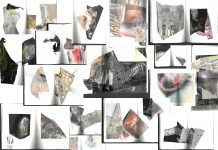“For me, it was my little grey compostable bin in the kitchen. The cutting board became a canvas, and the kitchen became a studio. It is essential to have fun, too. It’s underrated.”
SEUNGHYAE TAK, WFH 2020
Like so many 2020 graduates, RCA MA Textiles students have seen their routes to graduation drastically change. The creation and presentation of their collections has been produced through problem solving within this new, uncertain context. These bodies of work, like the collections of their graduating colleagues around the UK, encapsulate their creative determination.
The RCA 2020 Graduate Show will take place online. In the spirit of providing alternative platforms for students to showcase their work, Knitting Industry Creative introduces you to 4 knitted textiles graduates to look out for.
RONGDI MA
Rongdi’s project explores how body movements could influence knit structurally, and how knitted structures could inform body movements- a fluid design process inspired by the work of Oskar Schlemmer.

First sketching from life, Rongdi went on to visualise shapes and forms in knit, pushing the limits of scale, colour and structure. The majority of her fabric development was created on fine gauge Dubieds. Rib structures achieve the elasticity required for her knits to hug the solid boning, whilst tubular structures create the pockets for inserting her boned scaffolding.

Focussing on utilising and developing her existing work, Rongdi made the best of her situation, continuing to draw as this has “always been a friend” of hers. Explaining the impact of the UK lockdown on her final collection, Rongdi shared, “It was really challenging for me to continue the project as planned without any access to workshops. During this time, everything became virtual. I started self-learning cinema 4D and creating 3D models of my fabric structures.”

Rongdi’s planned visualisation of her collection through collaborating on a performance of her fabrics in movement on the body has been put on hold for now, but once restrictions are lifted she will work to achieve this. The future holds exciting things for Rongdi, as she hopes to set up her own knit studio in China.

SEUNGHYAE TAK
Seunghyae’s collection is a series of soft, customisable, and multifunctional knitted vessels. The ‘Soft Vessel’ project received the 1st prize for Clothworkers’ Company sector of 2020 Bradford Textile Society Awards, and yarn sponsorship from Manifattura Sesia.

Recognising that covering and softening is a primary expectation of textile components within design processes, and noting the monochromatic palettes and matte finishing of functional textiles, Seunghyae has created an alternative.

Explaining her colour choices, Seunghyae detailed, “Colours come from my South Korean heritage and nomadic life experience. Colour palette creation is like a ritual- it is an intuitive act with an aim. I connect with specific images that speak to me and build my work.”
Yarn choices further the contrast within the vessels through textural change, combining woollens with elastics. Knitting these on a 12gg Stoll machine, Seunghyae used drawings and 3D paper modelling to meticulously plan her samples before knitting.
Since the WIP show, Seunghyae has refined her craft to fine detailing. The addition of pleat details created space for clarity in contrasts, and further sampling resolved roll edge details.
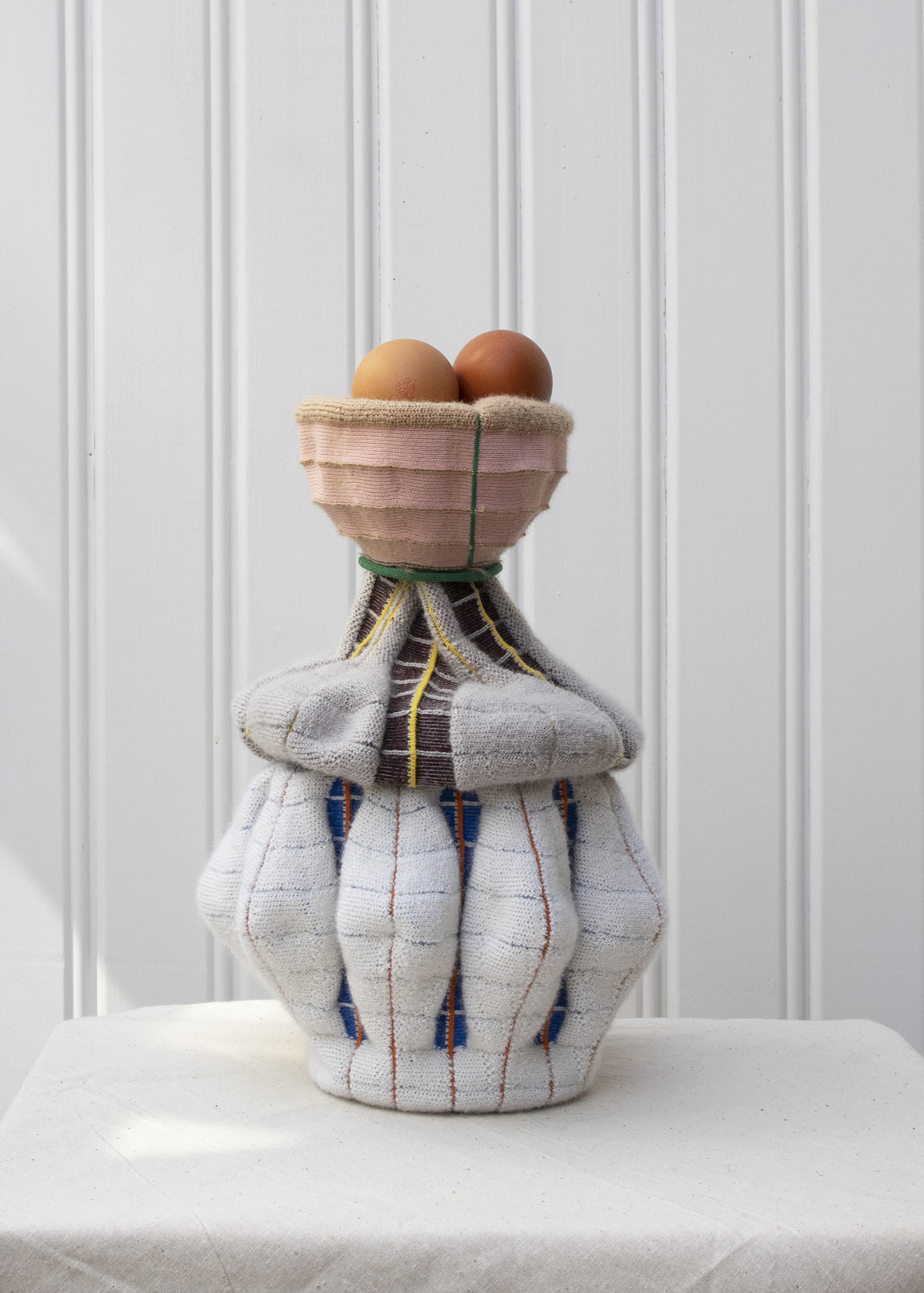
Seunghyae refocused her problem solving whilst working from home, “There was a surge of compostable waste in my household, and they were in extraordinary natural colours, so I created bioplastic samples using food waste. The concept is a hard decorative trim that could biodegrade or possibly melt away in hot water after lifespan. I used lots of time to reflect, read, and inspiration came organically from my surroundings. For me, it was my little grey compostable bin in the kitchen. The cutting board became a canvas, and the kitchen became a studio. It is essential to have fun, too. It’s underrated.”
Continuing to develop her textile expertise is Seunghyae’s plan. Her positivity in the face of adversity is truly inspiring. Seunghyae has been named as a finalist in the Shima Seiki 2020 competition.
SHIXIU LIU
“I am not good at speaking, so the most important thing of my work is to say something. I think this is my passion to do things.”
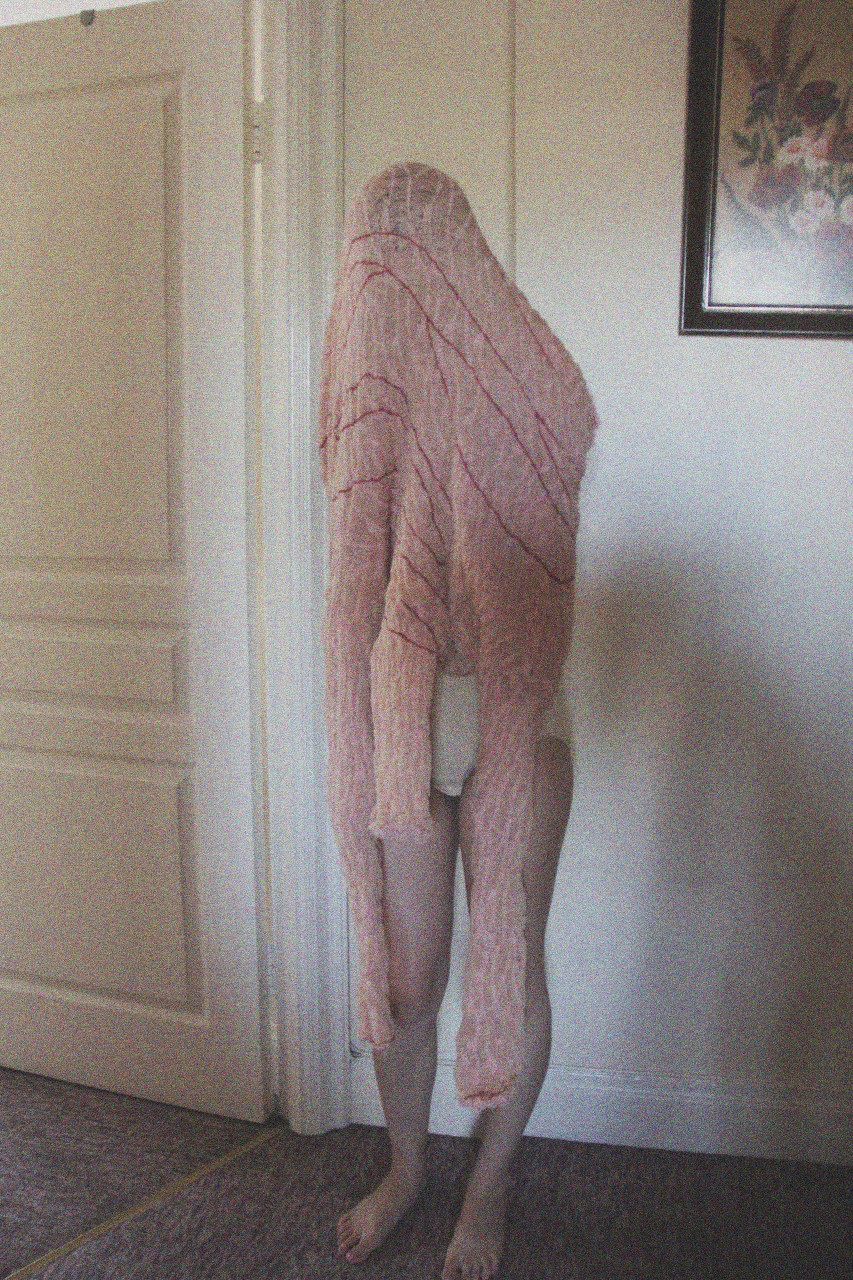
Shixiu’s collection confronts the relationship between body and self, exploring self-perception and how this mental state can cause changes in body shapes, movements and postures. The word tension has both a physical and metaphorical importance within her collection, through the communication of conflicting emotions, as well as resembling the tension of skin when contorted or moving.
Her colours come from fleshy hues, seeing skin as a surface to connect people with the outside world, “The subtle changes on skin expose who you are and convey emotions- like insecure, stressed, self-doubting”. To Shixiu, skin is a canvas for emotional portrayal and her yarns mimic these hair and skin like textures.
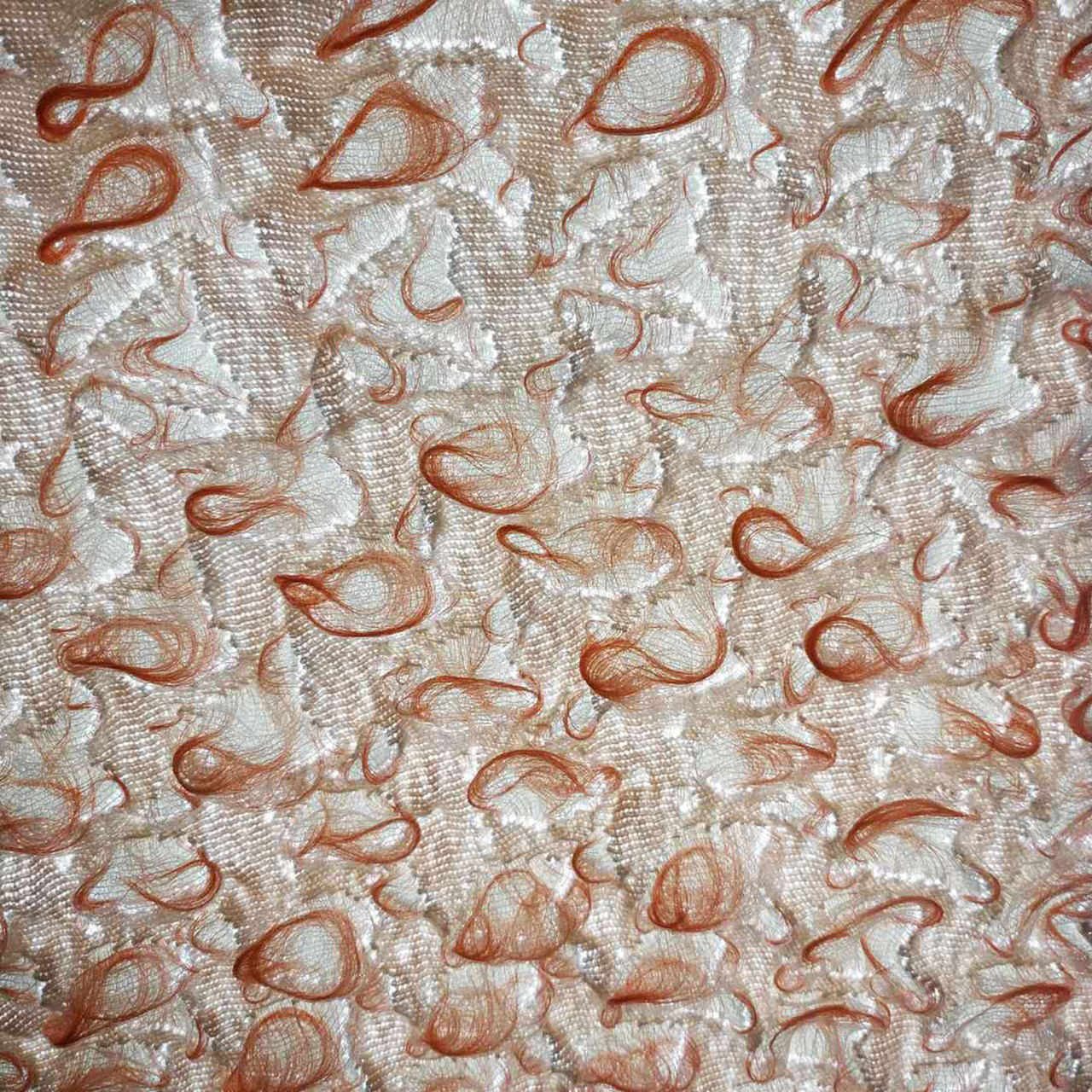
Utilising the Shima Seiki machines at the RCA, Shixiu developed jacquard structures, whilst also sampling on the Dubieds trialling inlays of silk and elastic to mimic hair. Discussing adapting to her home sampling process she said, “I bought books about techniques and practiced a lot to push my knowledge of my domestic knitting machine to achieve sophisticated results. The outcomes have been positive because I have expanded my portfolio with different fabric weights, and I discovered another creative world working with my domestic machine.”
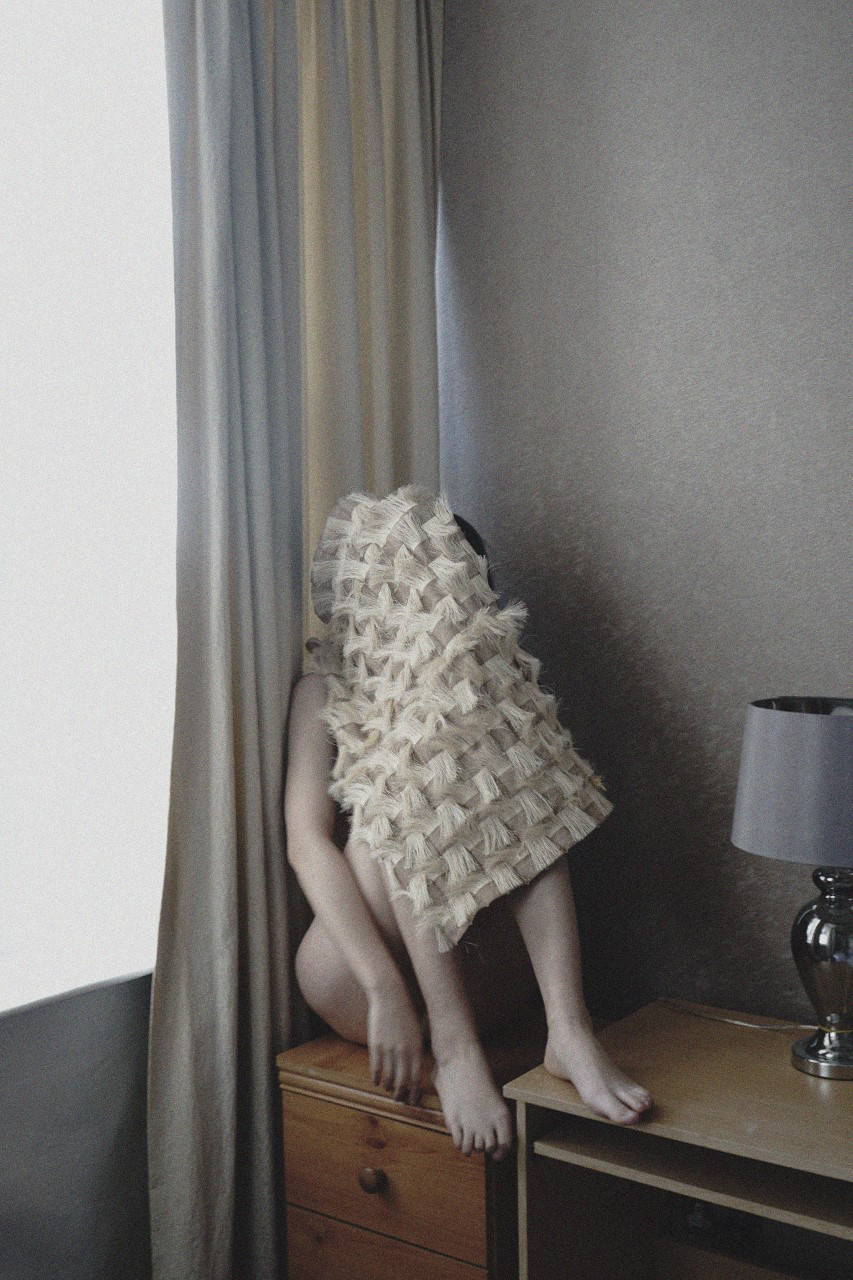
Shixiu’s next steps after graduation include continuing to explore shaping garments for the body, and researching Chinese markets so she can set up a design studio when she returns.
YUNZHI WANG
Influenced by Kitsch and Kawaii culture, ‘Seriously Cute’ stems from the conflicts between adultness and childishness. Yunzhi’s development focussed on stickers, cakes and dolls with mixed media sampling. Since the WIP show she has continued her playful, experimental approach, developing garments and textile capsule collections.
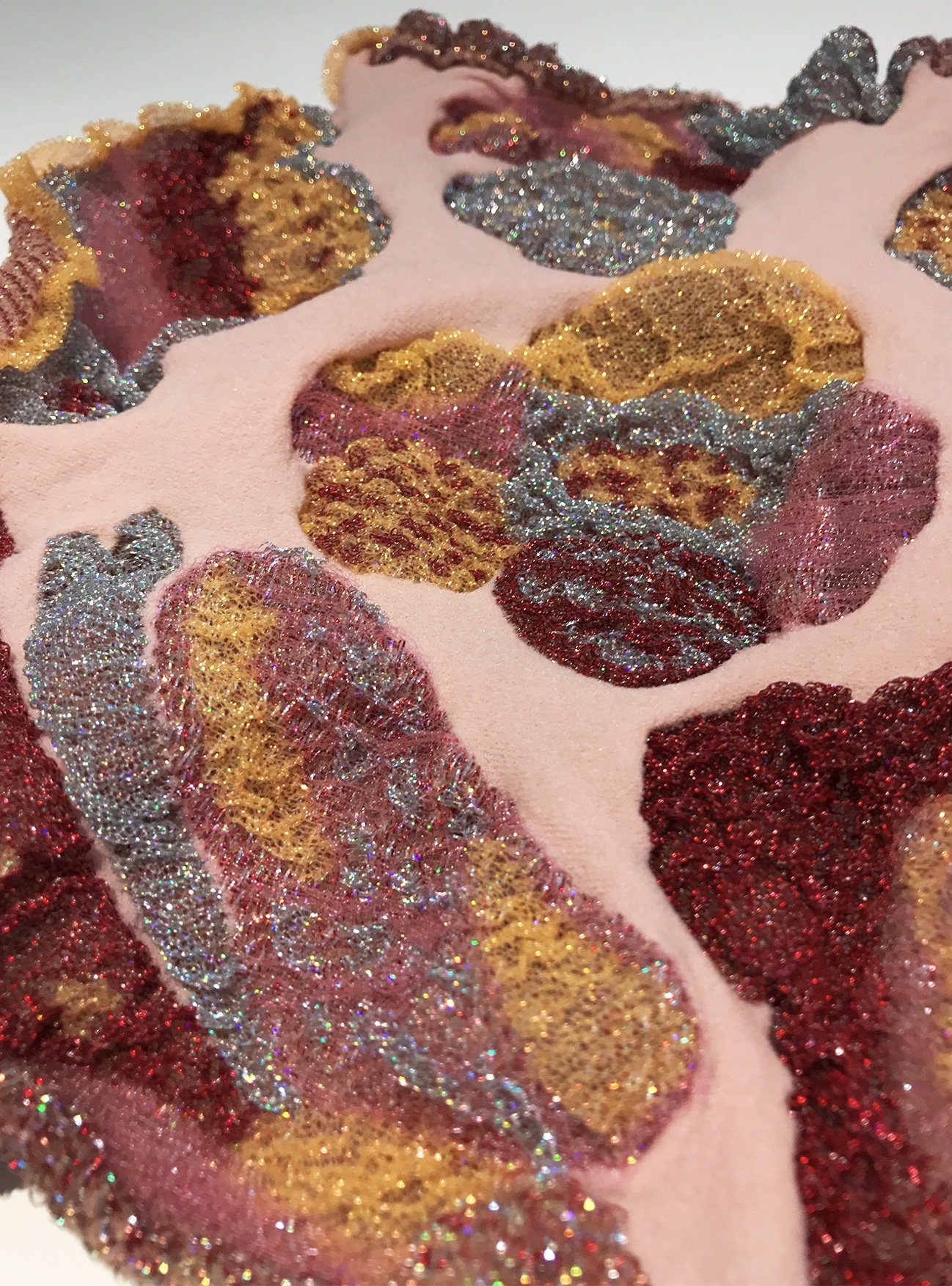
Communication of childhood nostalgia is important to Yunzhi and her colour choices are a catalyst for this, “For creating the scene of the playful ‘cuteness,’ pastel colours are the main tones. Fabrics are finished with light tones of pink, green, yellow, violet, and cream, adding Lurex in silver and vivid colours to highlight.”
Polyester and monofilament yarns feature heavily, as Yunzhi challenged herself to bring a luxury quality to synthetic fabrics. Bouclés, fine merinos and felting wools invite softness and textural contrast. Using yarn as a tool for “doodling” and appliqueing crochet flowers echoes her Kawaii inspiration.
Combining machine knitting with hand crafted techniques, Yunzhi’s range of mixed media techniques allows realisation of her ideas without technical limitations, facilitating her playful approach.
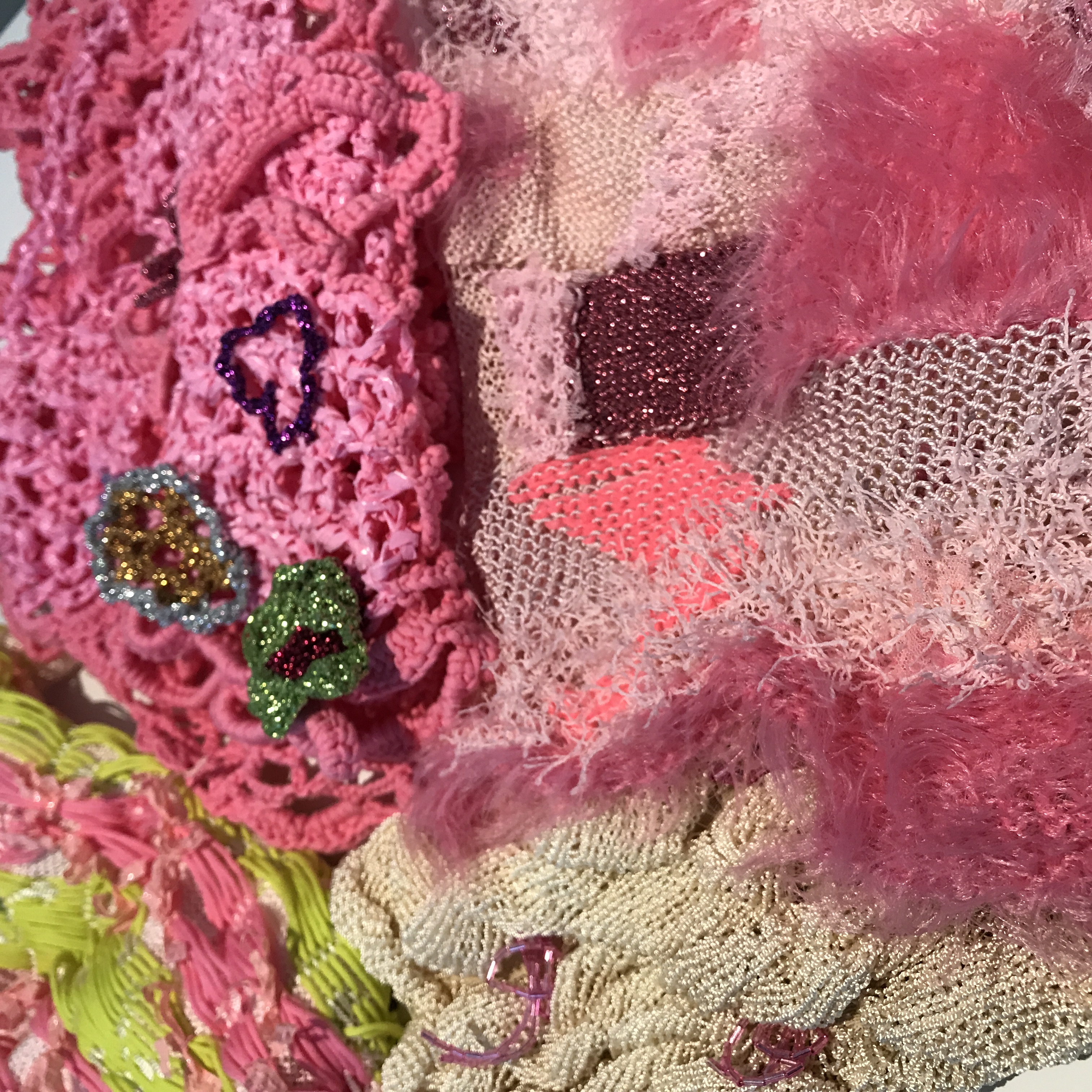
Describing her biggest challenge during lockdown, Yunzhi reflected, “Whilst working from my home studio, I have pushed myself to manage time well. It is easy to lose pace at home, but I feel so lucky that I have my domestic knitting machine with me, and have been able to continue to knit.”
Collaboration is on the horizon for Yunzhi after graduation, as she plans to move to her hometown in Shanghai and build a womenswear brand in collaboration with a fellow LCF graduate.
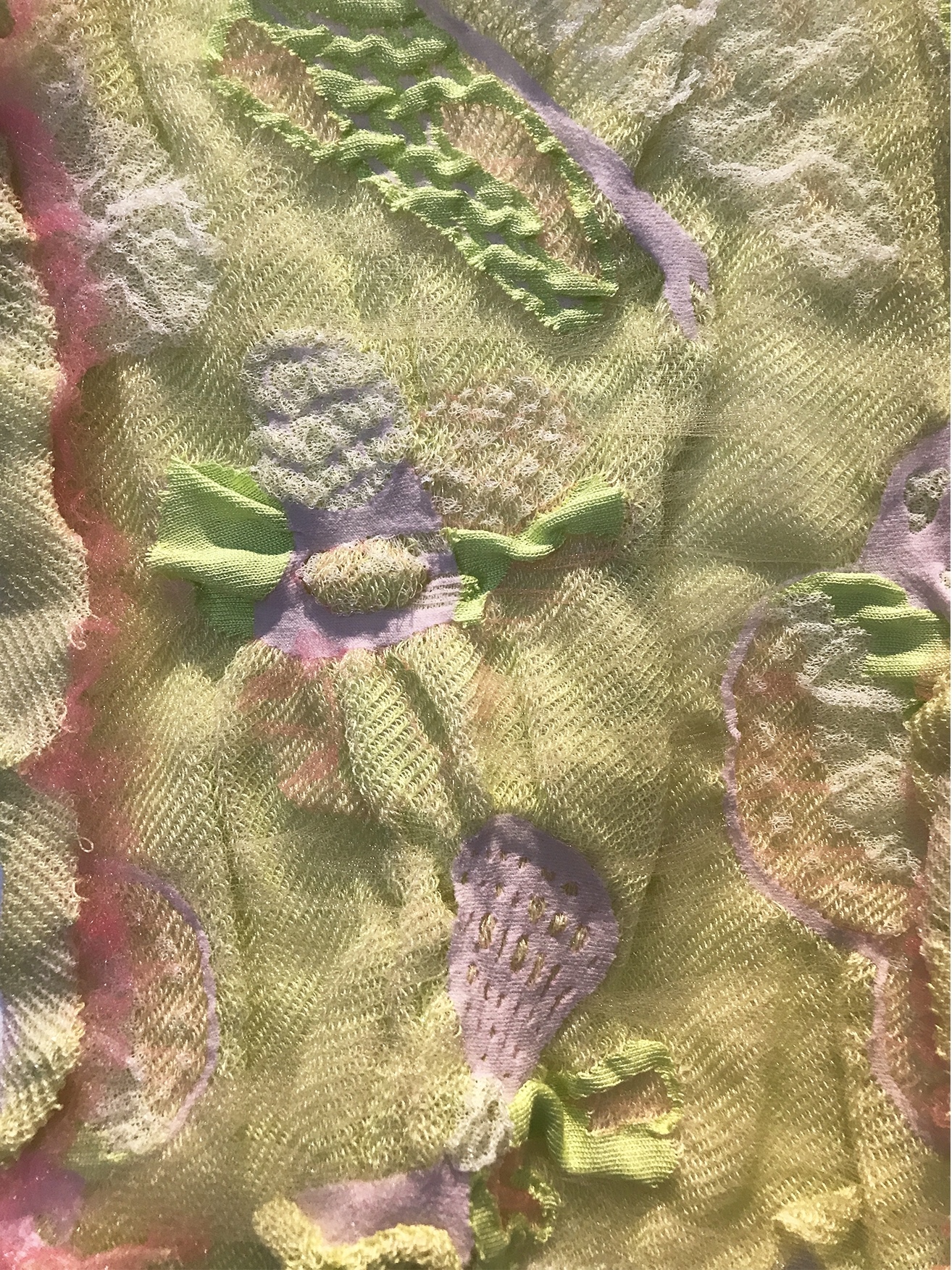
These graduates present inspired approaches to creative problem solving, and you can view more of their work, and that of their colleagues, by ‘visiting’ the RCA Virtual Graduate Show soon. Keep an eye out on the RCA Textiles Instagram and the RCA website for further details.

Subscribe To Our Newsletter
Join our mailing list to receive the latest news and updates from our team.











